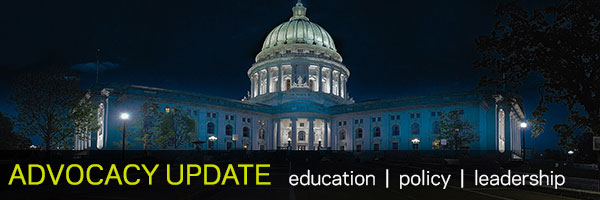The Big News

A judge yesterday ordered Johnson & Johnson to pay $572 million for its role in Oklahoma’s opioid crisis—money expected to help fund addiction treatment and related services. It’s the first trial-court ruling to hold a drugmaker culpable for the crisis, and likely heartened lawyers pursuing a similar legal strategy in other opioid cases. Previously, Purdue Pharma paid $270 million and Teva Pharmaceuticals paid $85 million to settle claims filed by Oklahoma. J&J, however, chose to fight the
allegations that it contributed to the opioid crisis by inappropriately marketing its painkillers. That was a costly decision. But the state had asked for much more: around $17 billion. The judge found the pharmaceutical company liable for only about 1/30th of that. The decision, which Axios described as both big and small, is a reminder that no amount of money can make up for the lives lost during this prolonged national tragedy.
Meanwhile, in another case expected to inform massive national litigation pending in a federal court in Cleveland, Endo and Allergan proposed settlements totalling $16 million with two counties in Ohio. Their deals likely will keep the pharmaceutical companies out of an October 21 trial that is expected to set important precedents for the national litigation. But Ohio’s attorney general reminded Endo and Allergan that their settlements will not resolve the state’s allegations against them. Endo, in fact, still faces 18 lawsuits filed by states, 2,300 by other counties or other local government entities, 153 by hospitals, and another 131 by individuals—many consolidated into the huge federal case pending in Ohio.
Amid all the legal drama, we can all take time to observe International Overdose Awareness Day this Saturday, Aug. 31. It’s a day to raise awareness of overdose, reduce the stigma of drug-related deaths, acknowledge the grief felt by families and friends of those who have been lost or permanently injured due to overdose, and spread the message that overdose deaths are preventable. Check out the activities and resources found here (the graphic above is an example).
A day later, National Recovery Month begins. This year marks the 30th anniversary of National Recovery Month, which initially was known as “Treatment Works!” Month and specifically honored the work of substance use treatment professionals. The observance evolved into National Alcohol and Drug Addiction Recovery Month in 1998, when it expanded to include celebrating the accomplishment of individuals in recovery from substance use disorders—evolving once again in 2011 to encompass mental illness and become known
as National Recovery Month.
Speaking of history, two more presidential candidates trying to make some—South Bend, Ind., Mayor Pete Buttigieg and U.S. Sen. Kirsten Gillebrand—have put forth plans to address the nation’s mental health and addiction crisis. Let’s hope the resulting public dialogue helps propel the issue into the next debate scheduled
for Sept. 12 and beyond. It’s encouraging that both candidates’ plans (see Buttigieg’s and Gillibrand’s) focus so strongly on “parity.” Buttigieg’s $300 billion proposal, including $100 billion in grants over 10 years, is also notable for its wide-ranging scope and attention to the public
health effects of isolation and loneliness—seen to be root causes of so-called deaths of despair. Other candidates with specific mental health and addiction plans include U.S. Sens. Amy Klobuchar and Elizabeth Warren.
Warren and U.S. Sen. Bernie Sanders also joined fellow candidates, entrepreneur Andrew Yang and New York City Mayor Bill de Blasio, in endorsing supervised injection sites. That, just as a notable courtroom battle got under way in Philadelphia about whether such sites are legal.
The President tweeted Friday that U.S. shipping companies should search for and reject any packages containing fentanyl from China or any other country. It was unclear whether the tweets would be followed by new guidelines from federal agencies. While China officials accused the U.S. of using fentanyl as a political weapon and
some companies assured that they already are following extensive security measures, an in-depth report by the Washington Post explains how fentanyl is still flowing into the U.S. through the mail—most often via the U.S. Postal Service—and in vehicles crossing the Mexican border.
Switching gears, it was mostly good news in this year’s National Survey on Drug Use and Health (NSDUH). Prescription pain reliever misuse and heroin use declined significantly in 2018 as more people gained access to addiction-fighting medication, though improvements varied quite a bit by state. One possible explanation can be
found in a separate study released by the Urban Institute last week, showing that buprenorphine, a medication used to treat opioid addiction, is prescribed vastly more in states that expanded Medicaid under the Affordable Care Act than in states that chose not to expand the public health insurance program.
According to the NSDUH, young adults used less of several substances in 2018, as did pregnant women. Marijuana use, however, remained stubbornly high, with cannabis use disorder up among young adults and marijuana use up significantly among adults. Meth and hallucinogen use, meanwhile, declined among young people but increased significantly among adults. Cigarette smoking is almost negligible these days (though vaping—not yet captured by this survey—is by all accounts on the rise). Giving up tobacco is great, but what if doing so increases your risk for depression and other substance use? That’s a question some public health officials are asking in reaction to findings in the NSDUH. Another concern appears to be increased depression and suicidality among young people. Check out more of the survey summary here.
Another separate study found that people who use drugs in the United States spent on the order of $150 billion on cocaine, heroin, marijuana, and methamphetamine in 2016. A lot, and still far less than we spend on alcohol.
Finally, as anticipated, HHS proposed changes to 42 CFR Part 2, the federal regulations governing the confidentiality of patient records created by federally-assisted substance use disorder treatment programs. See the fact sheet for details. We support aligning Part 2 with HIPAA for purposes of providing treatment, facilitating
insurance payments and operating our programs. Such alignment for all providers will better enable system integration and coordinated care. This proposal does not achieve alignment and consistency, but knowing there are limits to the Administration’s rulemaking authority on this issue, we look forward to continued work with Congress to further align our medical-record standards so that we can continue the push for equitable care and parity.
This week’s featured media is the latest episode in our Let’s Talk podcast, with host William C. Moyers talking to three people in long-term recovery about hope, healing and the everyday challenges they continue to navigate—as well as the bountiful benefits of practicing gratitude, giving back and being of service to others. Watch, listen or read.
Share: Tweet | Facebook | LinkedIn
|











